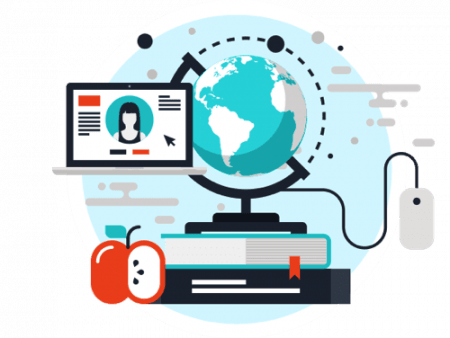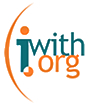2019 - List of selected contestants
The following contestants have been accepted to participate in the 65th International Piano Competition Maria Canals that will be held in Barcelona, between March 23rd to April 4th in Palau de la Música Catalana.
The members of the Selection Committee highlighted the great level of all the candidates. Because of the limited number of contestants that the Competition is able to cover, a lot of contestants with the qualified level to participate were not accepted. From the Competition we encourage them to present their candidature again in the future.
The Secretary of the Competition will send all the selected contestants an email with all the information about Schedule, hotel and registration fee.
- Robert Bily
- Bernat Català Rams
- Xuehong Chen
- Jun Hwi Cho
- Efstathios Chomatsas
- Aaron Chow
- Diana Chubak
- Antonia Comito
- Diana Cooper
- Anna Dmytrenko
- Dominic Doutney
- Daniel Hyunwoo Evans
- Francisco José García Verdú
- Magí Garcías
- Salih Can Gevrek
- Nicolas Giacomelli
- Radosaw Godzikowski
- Pedro Gomes
- Josue Gonzalez
- Natanel Grinshtein
- Zhiheng Guo
- Michael Andreas Haeringer
- So Hyang In
- Wenqiao Jiang
- San Jittakarn
- Hyeonjun Jo
- Luis Carlos Juarez Salas
- Honggi Kim
- Su Yeon Kim
- Haeun Kim
- Shuta Kimoto
- Ana Kipiani
- Aleksandr Kliuchko
- Kurara Koga
- Magorzata Kruczek
- Nikolai Kuznetsov
- Rafael Kyrychenko
- Jin-Hyeon Lee
- Tommy Jing Yu Leo
- Robert Levinger
- Jinhong Li
- Ying Li
- Daumants Liepins
- Roman Lopatynskyi
- Philipp Lynov
- Nail Mavliudov
- Sitong Meng
- Rodolphe Menguy
- Alberto Greer Menjon Bohanna
- Dongjun Miao
- Filip Michalak
- Aidan Mikdad
- Francisco Montero
- Fuyuko Nakamura
- Jorge Nava
- Priscila Navarro
- Jeremias Javier Obando Telleria
- Daniel Ochoa Gaxiola
- Niklas Oldemeier
- Samuel Sangwook Park
- Yeon-Min Park
- Daria Parkhomenko
- Ido Ramot
- Kiana Reid
- Mateusz Rettner
- Rubén Ángel Russo gutiérrez
- Kazuya Saito
- Polina Sasko
- Philipp Scheucher
- Ayane Shoda
- Phanuwat Sripramodya
- Vitaly Starikov
- Kaoruko Takagi
- Simone Alessandro Tavoni
- Daria Ioana Tudor
- Xinran Wang
- Xiaoxiao Wei
- Andrzej Wiercinski
- Ka Jeng Wong
- Yong Gi Woo
- João Xavier
- Yuanfan Yang
- Alexander Yau
- Lin Ye
- Jihyung Youn
- Chuyue Zhang


DIOM, una palabra corta de largo recorrido
Hay proyectos que empiezas pero no sabes bien cuándo acabarán ni en qué se convertirán. El documental DIOM ha sido, sin duda, uno de estos casos.
Un proyecto que se inicia con el objetivo de documentar audiovisualmente, la creación de una cooperativa. Dicho así, no parece muy entusiasmante pero el por qué de esa cooperativa y los retos y objetivos de transformación que significa, hacen de la propuesta una imprescindible aventura.
El inicio no fue fácil. Esta cooperativa la han arrancado 15 personas que venían de la venta ambulante no autorizada. Manteras y manteros de la ciudad de Barcelona que, a partir de una iniciativa del Ayuntamiento, impulsan una empresa que permita conseguir sus documentos de residencia y legalizar su actividad.
“Pero, ¿cómo?, ¿con cámaras?, ¿que nos van a grabar?” La primera reacción fue negativa. Les pedíamos a estas personas que aceptasen nuestra presencia de forma cotidiana para grabar sus espacios de formación y trabajo. Y que se comportasen como si no estuviésemos. Les pedíamos que confiaran en nosotras sin conocernos.
“Lo que no entendéis es que para nosotros, la presencia de cámaras siempre ha significado problemas. Detrás de una cámara aparece la policía”
Y esa es la realidad. La realidad que se nos muestra, la realidad que crea significados, la realidad que nos separa.
‘La manta’. Qué gran lienzo para exponer los productos generados por el racismo: las vallas, los muros, las leyes de extranjería inhumanas, el miedo, la explotación, los intereses económicos, la violencia, los nacionalismos y fanatismos, la exclusión.
Pues no. Pues esta cámara no es una amenaza. Esta cámara está aquí para crear otras imágenes, para resignificar la realidad, para crear relaciones que nos acerquen.
Y así comenzamos a caminar a su lado, observando, encuadrando, registrando. Reuniones y reuniones, formaciones diversas, solicitudes de arraigo, la espera de unos papeles, debates, ventas y mercados, recetas, precariedad, aprendizajes y errores y un gran valor humano y comunitario.
Diomcoop es un proyecto valiente pero también complicado. Intenta dar respuesta a un problema del sistema y abrir camino a otro paradigma en el que la dignidad no sea cuestionable. ¿Es que lo era? Lamentablemente, la mayor parte de la sociedad, no somos conscientes de las repercusiones que ejercen las leyes migratorias sobre la vida de las personas.
Sin embargo, el proyecto plantea una propuesta, una actitud proactiva en la búsqueda de soluciones. Y en eso coincidimos plenamente. Desde Quepo apostamos por el valor de transformación del documental propositivo, más allá del de la denuncia.
Así que con un pequeño gran equipo, hemos grabado el proceso de creación de Diomcoop durante un año y medio. Era imprescindible contar con gente con una gran sensibilidad y mirada limpia, así que nadie mejor que María López Nova como dire de foto, una gran compañera. Y a la hora de digerir y ordenar las casi 200 horas de material, el currazo de Gemma Alfós ha sido fundamental. Y luego, ¿cómo ser capaces de condensar tantas capas en un docu de 30 minutos? Y ahí aparece Sofi Escudé, como un regalo que nos ayuda a estructurar lo esencial. Todas las personas que han formado parte en el proyecto, han sido fundamentales.
Y es que este proyecto acaba finalmente, con satisfacción y con mucho agradecimiento. Porque al final, qué suerte haber encontrado a Omar, Oumar, Ousseynou, Dieye, Aba, Pape, Ouli, Marie, Dame, Fatou, Kebba, Abdou Seck, Marietou, Kara, Cheikh, Thiam y Top que hayan accedido a compartir con nosotras este intenso periodo de sus vidas. Y qué bonito haber compartido todo esto con Tati, Baye, Guernica, Silvia, Xavi, Jesús, Ignacio, Patrick, Laura e Isabel, que se han convertido en compañeras en esta aventura.
+ Info en http://www.quepo.org/portfolio-posts/diom/
L'entrada DIOM, una palabra corta de largo recorrido ha aparegut primer a Quepo | Comunicació per a la transformació social.
.png)
iWith.org, is already part of the map of entities of the Solidarity Economy of Catalonia
The Pam a Pam project evaluates all those entities that meet the criteria of social transformation through the democratization of the economy and sustainability.
Continue reading iWith.org, is already part of the map of entities of the Solidarity Economy of Catalonia
Originally appeared on Iwith.org Foundation on 16/01/2019

Pam a Pam works to know in depth each initiative that shows on the map. To do this, it elaborates a questionnaire with 15 criteria that analyze the sustainability of the initiatives, the care of the work team or the community, the social impact of these in their surroundings and the environmental impact.
These 15 criteria are:
Internal democracy, personal development, feminist perspective, working conditions, suppliers, intercooperation, free and open licenses, transparency, financial management, social cohesion, social transformation, territorial roots, environmental sustainability, waste management, energy consumption.
Among all of these criteria, iWith.org stands out for its internal democracy, personal development, working conditions, intercooperation, free licenses, transparency, transformative finances, social cohesion and its territorial roots.
We are happy to be part of this movement of entities that share similar values, such as social transformation through democratization of the economy, self-management of work, prioritization of people above capital and relationships based in the cooperation and the sustainability of life.
More about iWith.org at Pam to Pam.

Open source online education tools
More and more youth NGOs start to organize online education activities. Within this post we answer on the most frequent questions that appear once you think to implement such kind of activities based on open source education tools. This article is from our Turn Online page.
The term "open source" refers to something that can be modified and shared because its design is publicly accessible.
What is open source software?
Open source software is software with a source code that anyone can inspect, modify, enhance and distribute.
Why use open source software/tools?
Many reasons, some of them:
- Cost benefit. Most of the open source tools are freely available so your organization can save money.
- Stability and enhanced security. The ability to study the source and perform independent code audits makes it possible to find and fix security issues really fast.
- Support. You have a whole community behind when you need help or to fix an issue!
- Flexibility. Independence from restrictive use guidelines and free to develop your ideas customizing as you see fit having true control.
- Avoid incompatibilities between newer formats or versions of a software, as it usually happens with proprietary software.
- Many innovative features. Otherwise difficult to have without paying large amounts of money.
- Real ownership of the software and of your creation.

Here are some well-known tools for educational proposes that organizations can use.
Moodle
Moodle is a learning platform designed to provide educators, administrators and learners with a single robust, secure and integrated system to create personalized learning environments. It is a free and open-source learning management system (LMS) under the GNU General Public License. Developed on pedagogical principles, Moodle is used for blended learning, distance education, flipped classroom and other e-learning projects in schools, universities, workplaces and other sectors.
Learn more: https://moodle.org/
Open edX
Open edX is the open source platform that powers edX courses. edX code is freely available to the community. Institutions can host their own instances of Open edX and offer their own classes. Educators can extend the platform to build learning tools that precisely meet their needs. And developers can contribute new features to the Open edX platform. EdX is a nonprofit online initiative created by founding partners Harvard and MIT and composed of dozens of leading global institutions, the xConsortium.
Learn more: https://open.edx.org/
Sakai
From its inception, Sakai was designed to meet the needs of higher education. Conceived as an alternative to business-driven proprietary systems, Sakai provides a flexible, innovative platform for online learning. With development driven by a broad, global community of adopters and commercial affiliates, Sakai delivers powerful functionality while remaining true to its nature as 100% open-source.
Learn more: https://www.sakaiproject.org/
Story MapJS
StoryMapJS is a free, open-source storytelling tool that uses maps to tell stories. The tool is developed by the The Knight Lab at Northwestern University.
Learn more: https://storymap.knightlab.com/
Libre Office
LibreOffice is a powerful office suite that help you unleash your creativity and enhance your productivity. LibreOffice includes several applications that make it the most powerful Free and Open Source office suite out there: Writer (word processing), Calc (spreadsheets), Base (databases), and most importantly for educational purposes: Impress (presentations), Draw (vector graphics and flowcharts) and Math (formula editing. Learn more: https://www.libreoffice.org/
Of course, this article doesn’t propose to stop using proprietary software and using only open source. We need to use the better tool for the task at hand. Sometimes, proprietary software may have better support service or maybe the open source version does not have the necessary features.
It depends. But is important to know that there are available open ICT tools out there of great quality that can really help an organization or company to grow and achieve its goals without additional or excessive cost. This is possible because of a large amount of people who works collaboratively to offer these tools having in mind the common good. So, just be “open” to explore new possibilities and the vast ocean of open source!
By Panos Antonopoulos & Nikos Matsankos
ICT Consultants at InterMediaKT

How to send emails without doing SPAM and complying with the LOPD and GDPR
Until now, if a user did not expressly oppose the processing of their personal data to receive information from your entity ('spam') it was interpreted as a tacit consent that allowed you to continue with this activity. Now things have changed!
Neither are the consents given before the date of full validity of the rule valid, so you must re-collect them.
Think that the optimal rate of 'Spam' should be below 0.1% and if you do not want to be closed or your account is reviewed it is important to comply with the new LOPD and have a "clean" database.

We propose the following:
1- stop sending massmailings and newsletters
2- clean the databases by eliminating all those recipients whose names and surnames do not have
3 - seriously consider compliance with the LOPD and GDPR by which to maintain personal data (email) in a database is necessary to have express authorization.
Evaluate if your current email lists comply with the law to prevent SPAM
Do your lists meet the RGPD? To know, ask yourself these questions:
Did your contacts give consent to receive your emails through a voluntary subscription form?
Did the user give consent for the specific purpose for which you are using their data? For example, if you only subscribed to the newsletter, it is not enough consent to use your data in other shipments
Did you create accurate and safe records of all the registrations you received?
What is the authorization for?
As we mentioned in point 2, the inclusion of an email address in a database is not a blank check, but is focused on specific purposes.
And when there are different purposes within the same organization, a legitimating basis is needed for each treatment.
For example, an email or a phone number that was requested to notify any service does not authorize you to send information of any campaign to donate or send newsletters.
Therefore, there are organizations that include several boxes in the authorizations for all types of purposes, including one that selects all automatically. This is not valid either.
In this link, you can obtain more information about good practises to sending emails.







